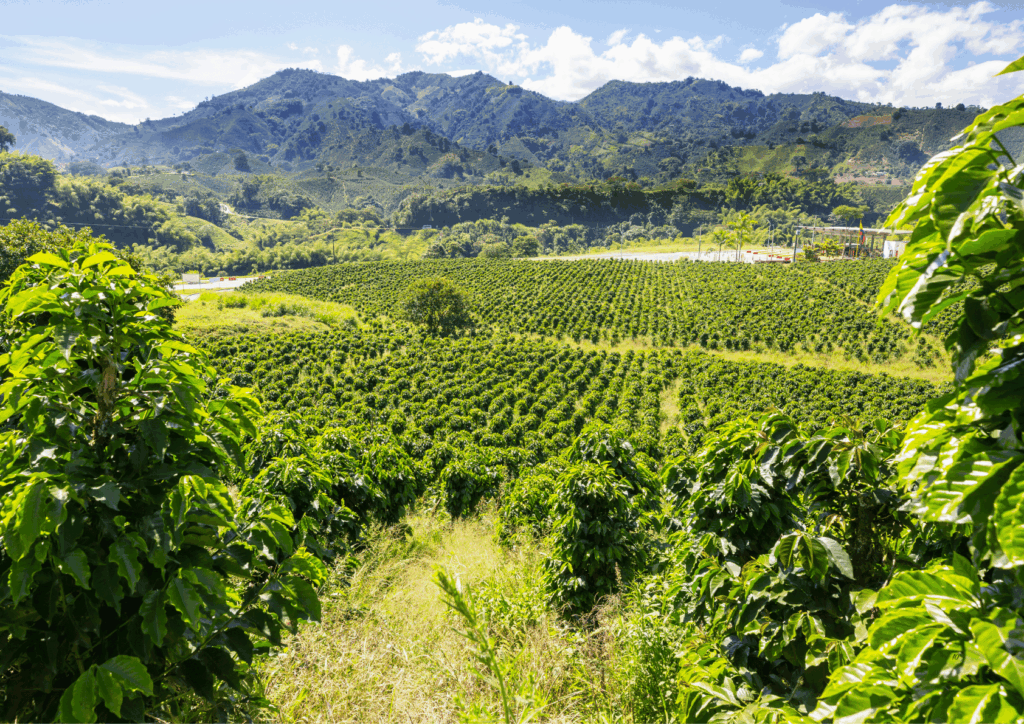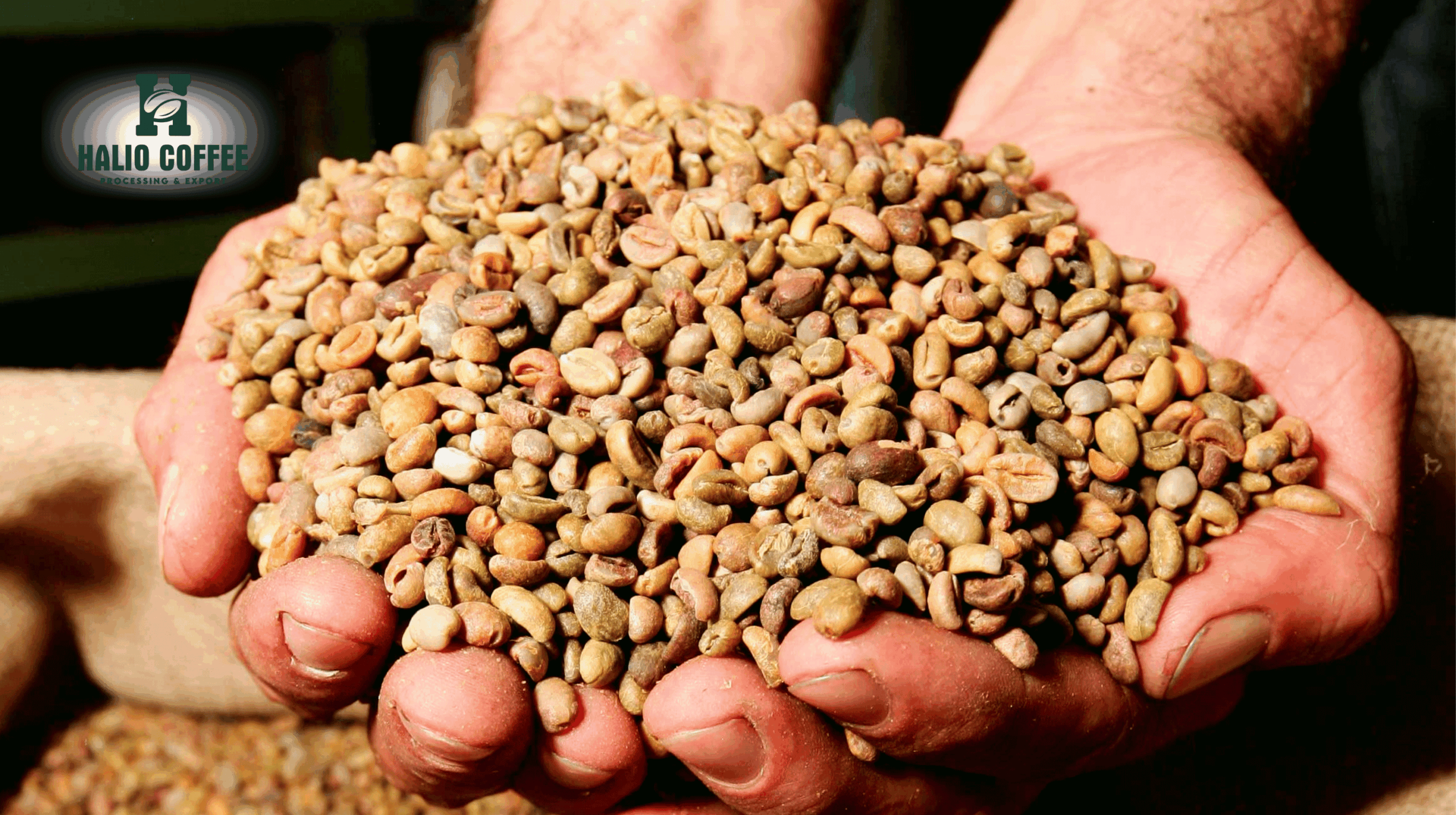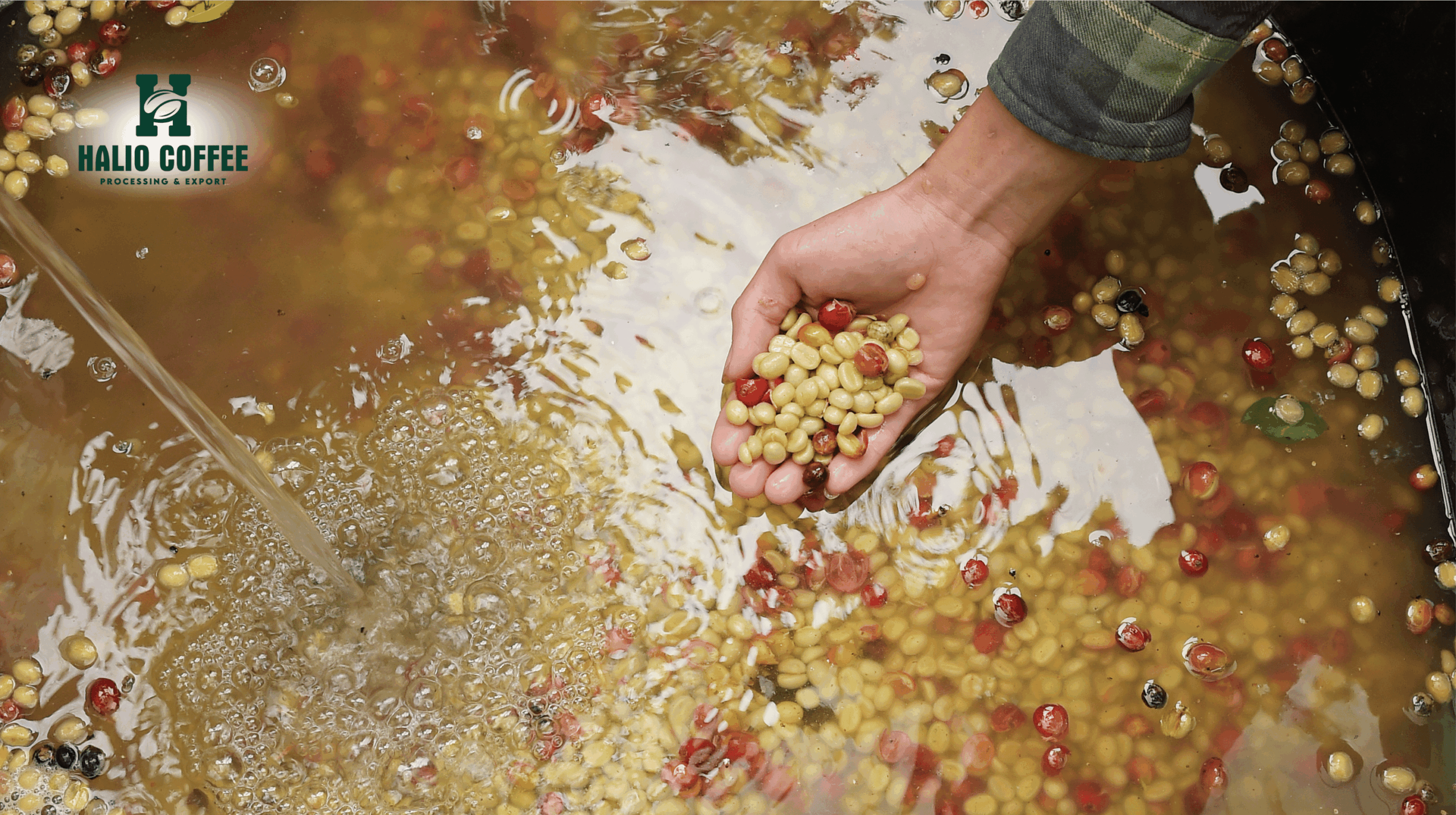High Altitude Arabica Coffee Beans: Unlocking Superior Quality from Vietnam’s Highlands
For coffee roasters, manufacturers, and distributors, the term “high altitude” in relation to Arabica coffee beans is synonymous with superior quality. These beans, nurtured in unique microclimates, offer a complexity and nuance of flavor rarely found in their lower-grown counterparts. While traditionally associated with Latin American and East African origins, Vietnam, from its burgeoning coffee regions, is increasingly producing High Altitude Arabica Coffee Beans that are gaining international recognition, offering exciting prospects for the global market as of July 26, 2025.
1. The Science and Art of High Altitude Arabica Coffee Beans
The exceptional qualities of High Altitude Arabica Coffee Beans are directly linked to the specific environmental conditions at higher elevations. Arabica coffee (Coffea Arabica) thrives in these environments, which naturally stress the plant in ways that enhance bean development.
1.1 Why Altitude Matters for Coffee Quality
- Cooler Temperatures: Higher altitudes mean cooler average temperatures. This slows down the maturation process of the coffee cherry. Instead of ripening quickly, the beans have a longer time on the tree to develop.
- Slower Maturation = Complex Flavor: This extended development period allows the coffee cherry to accumulate more complex sugars, organic acids, and aromatic compounds. These precursors are vital for developing the vibrant, nuanced flavors and intense aromas that specialty coffee enthusiasts crave.
- Denser Beans: Cooler temperatures and slower growth also lead to denser (harder) beans. These denser beans hold their flavor compounds more effectively, result in more consistent roasting, and typically have a longer shelf life.
- Better Drainage: High-altitude terrains often provide natural, excellent drainage. This prevents waterlogging around the roots, ensuring the plant efficiently absorbs nutrients and concentrates flavors within the bean.
- Reduced Pests and Diseases: Higher altitudes typically have fewer pests and diseases that thrive in warmer, humid conditions, reducing the need for chemical interventions and supporting cleaner, healthier bean development.
- Distinct Acidity: High altitude Arabica is frequently characterized by a brighter, more refined acidity (often compared to citrus or apple) which contributes to a lively and refreshing cup.
1.2 Characteristics of High Altitude Arabica Beans
When roasted, High Altitude Arabica Coffee Beans typically exhibit:
- Elevated Acidity: A clean, vibrant, and often citric or malic acidity.
- Complex Flavors: A wider spectrum of distinct flavor notes, including floral, fruity (berry, stone fruit), chocolate, caramel, nutty, and spicy undertones.
- Intense Aromatics: A rich and appealing aroma, often with floral, sweet, or fruity nuances.
- Clean Cup: A very clean and clear taste, with little to no bitterness or unpleasant notes.
- Lingering Aftertaste: A pleasant and lasting finish.
- Medium to Full Body: While highly variable, they often possess a well-defined body that carries the flavors effectively.
2. High Altitude Arabica Coffee Bean Production in Vietnam

While Vietnam is predominantly a Robusta producer, its commitment to quality and diversification has led to a significant focus on cultivating High Altitude Arabica Coffee Beans in specific regions.
2.1 Key High Altitude Arabica Growing Regions
Vietnam’s prime Arabica growing areas are concentrated in its highlands, where elevations provide the necessary conditions:
- Lam Dong Province (Cau Dat, Da Lat): This is the flagship region for Vietnamese high-altitude Arabica. With elevations often ranging from 1,000 to over 1,600 meters, Cau Dat Arabica is renowned for its distinctive aroma, bright acidity, and complex flavor profiles, often featuring notes of chocolate, nuts, and subtle floral or fruit undertones. It’s considered the heart of Vietnam’s specialty Arabica.
- Northwestern Provinces (Son La, Dien Bien): These mountainous areas, generally between 900m and 1,400m in altitude, are increasingly recognized for producing clean-tasting Arabica with nuanced characteristics, gaining traction in the specialty market.
- Quang Tri Province (Khe Sanh): An emerging region, Khe Sanh, with its unique microclimate influenced by its geographical position, is showing promise for high-altitude Arabica with potential for bright, distinctive flavors.
2.2 Cultivation and Processing Practices at Altitude
Vietnamese producers in high-altitude areas are increasingly adopting best practices to maximize quality:
- Selective Hand-Picking: Crucial for specialty quality, ensuring only ripe cherries are harvested. This labor-intensive process is vital for the inherent quality of High Altitude Arabica Coffee Beans.
- Diverse Processing Methods: While washed processing is common for its clean cup, high-altitude farms are increasingly experimenting with controlled honey and natural processes to develop unique and complex flavor profiles highly sought after by specialty roasters. This innovation is key to expanding Vietnam’s Arabica appeal.
- Investment in Infrastructure: Modern mills, controlled drying beds, and improved storage facilities are being implemented to protect the delicate qualities of these premium beans from environmental factors and ensure they reach the buyer as high-quality green Arabica coffee.
See more:
- High Altitude Arabica Coffee Beans
- Arabica Coffee Supplier for Cafés & Roasteries
- Halio Coffee – Your Trusted Fresh Coffee Distributor of Robusta & Arabica Beans
3. Benefits for Roasters and Distributors Sourcing High Altitude Arabica from Vietnam

For international coffee companies and fresh coffee distributors, Vietnamese High Altitude Arabica Coffee Beans present a compelling opportunity:
- Unique Flavor Profiles: Offers a distinct alternative to established origins, providing roasters with new avenues for blend creation or single-origin offerings that stand out. These unique Vietnamese characteristics can provide a competitive edge.
- Growing Specialty Recognition: Vietnamese high-altitude Arabica is increasingly scoring well in SCA cupping protocols (often 80+ points), signaling its suitability for the specialty market. Vietnam’s coffee exports have hit record highs in the first half of 2025, driven by a strategic shift towards higher-value Arabica and processed coffee, indicating a growing global acceptance.
- Improving Quality Consistency: Focused efforts on farmer training, advanced processing, and stringent quality control are leading to more reliable batches of premium beans. This commitment ensures that bulk purchases of High Altitude Arabica Coffee Beans maintain desired standards.
- Competitive Value: While considered premium, Vietnamese high-altitude Arabica can often offer a competitive price point compared to similar quality beans from other renowned origins, providing attractive margins for roasters and distributors.
- Sustainability Focus: A rising number of high-altitude producers are adopting sustainable and certified (e.g., Organic, Rainforest Alliance) practices, meeting global demand for ethically sourced coffee. This aligns with corporate social responsibility goals of many buyers.
- Traceability and Compliance: Many suppliers are actively building robust traceability systems to comply with regulations like the EU Deforestation Regulation (EUDR) (effective December 2024), which is vital for market access, especially into the lucrative European market.
4. Challenges in Sourcing High Altitude Arabica Coffee Beans from Vietnam
Despite the growing potential, sourcing high-altitude Arabica from Vietnam does come with certain considerations:
- Limited Production Volume: Compared to Vietnam’s colossal Robusta output, the volume of high-altitude Arabica remains relatively small. This can be a challenge for very large bulk buyers needing consistent, massive quantities from a single origin. USDA forecasts Vietnam’s Arabica production for 2025/26 at 1 million bags, a modest figure compared to global demand.
- Vulnerability to Climate Change: Arabica, especially at high altitudes, is highly sensitive to climate fluctuations. Recent severe droughts in Vietnam (as observed in early 2025) can impact yield and quality, making a flexible sourcing strategy and strong supplier relationships crucial for mitigating supply risks.
- Consistency Across Smallholders: The coffee industry in Vietnam is largely composed of smallholder farmers. Ensuring highly consistent quality across many small farms for larger High Altitude Arabica Coffee Beans lots (e.g., multiple containers) requires diligent effort and strong quality management systems from exporters.
- Infrastructure for Micro-lots: While improving, the infrastructure for handling very small, specific high-altitude micro-lots (where detailed separation and unique experimental processing is applied) might still be developing in some areas, potentially limiting options for ultra-premium buyers.
- Navigating EUDR: Compliance with the EUDR’s farm-level traceability requirement for a highly fragmented production base remains a significant, complex challenge. Vietnamese suppliers are actively investing in technology and processes to overcome this, but buyers should ensure their chosen partners are well-prepared.
5. Strategic Sourcing of High Altitude Arabica Coffee Beans
For roasters and distributors seeking to add these prized beans to their portfolio, a strategic approach is essential:
- Define Quality & Flavor Profiles: Clearly identify the desired cupping score range, specific flavor notes (e.g., bright citrus, chocolatey, floral), and precise physical characteristics (moisture, density, defect tolerance) that align with your product development goals for High Altitude Arabica Coffee Beans.
- Partner with Reputable Suppliers: Engage with Vietnamese exporters who specialize in Arabica, particularly those with strong, long-standing relationships with high-altitude farming communities. A well-connected fresh coffee distributor with established networks in Vietnam can also facilitate these crucial connections.
- Request Samples & Cupping Reports: Always request comprehensive green bean samples for physical inspection and, crucially, detailed cupping reports for any potential lot. Conduct your own rigorous in-house cupping to independently verify the quality and ensure it meets your specific standards and expectations.
- Verify Certifications & Traceability: For high-altitude Arabica, robust traceability is a significant value-add. Verify any sustainability or organic certifications the supplier or farms hold, and thoroughly inquire about their concrete EUDR compliance plans and their ability to provide farm-level data.
- Assess Logistics & Packaging: Confirm the supplier’s capability to provide appropriate packaging (e.g., GrainPro bags or other specialized barrier bags for optimal freshness and moisture protection) and to manage secure, timely international shipping, especially important for sensitive High Altitude Arabica Coffee Beans.
- Visit Origins (If Possible): For significant, long-term partnerships, a visit to the high-altitude growing regions and processing facilities in Vietnam can provide invaluable firsthand insight into farming practices, quality control, and strengthen collaborative relationships. This offers a deeper understanding of the product and its origin story.
- Establish Clear Contracts: Ensure all aspects of quality, quantity, price, delivery schedules, and rejection criteria are clearly defined in comprehensive contracts to minimize misunderstandings.
Conclusion
High Altitude Arabica Coffee Beans from Vietnam represent a compelling narrative of quality, unique terroir, and evolving production expertise. As Vietnam continues its strategic push into specialty coffee, its high-altitude Arabica offers distinct flavor profiles and a competitive value proposition for roasters and distributors worldwide. By understanding the unique characteristics these beans possess, the specific regions they hail from, and diligently navigating the opportunities and challenges in sourcing them, coffee businesses can strategically integrate Vietnamese high-altitude Arabica into their product offerings, enriching their product lines and catering to the growing global demand for exceptional, traceable coffee experiences. This niche, though smaller than Robusta, is undoubtedly a shining gem in Vietnam’s diverse coffee landscape.
- A Consultant’s Guide to Vietnam Coffee Farm Traceability
- Robusta and Arabica Prices Surge as Cold Front Threatens Brazil Crop
- Coffee Prices Today, Nov 11: Mixed Performance as Arabica Continues Rise on Supply Concerns
- Arabica Coffee Supplier for Cafés & Roasteries: A Strategic Partnership for Quality and Growth
- Coffee Prices Today, September 9: Strong Rebound on Global Exchanges







